Supermicro AS-1013S-MTR Hardware Overview
The Supermicro AS-1013S-MTR is a 1U server that is cost optimized in its layout. The chassis itself is extremely shallow at only 19.85″ deep. Even in such a shallow chassis, the server fits redundant 400W power supplies.
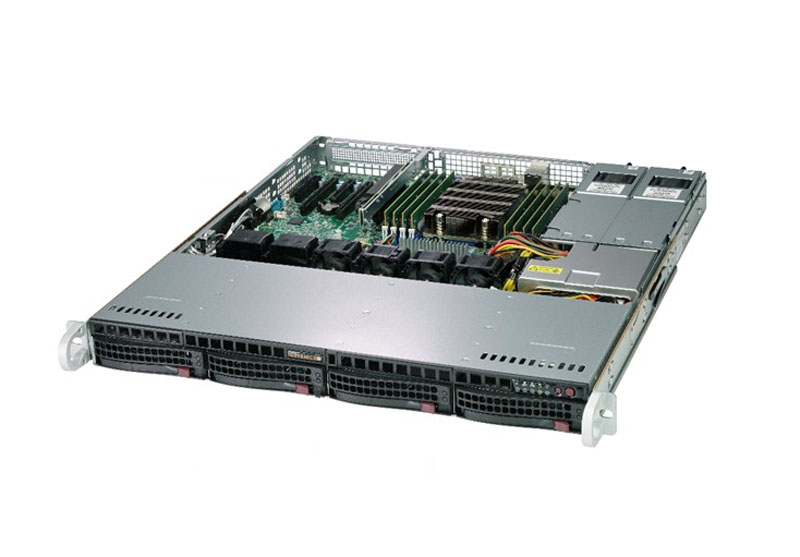
Key chassis features aside from the form factor are the 4x 3.5″ hard drive bays which can house 3.5″ SATA III hard drives or 2.5″ SSDs/ HDDs with an adapter. If one adds a SAS controller, the backplane can support SAS3 options.
The layout itself is fairly straightforward. The 3.5″ bays dominate the front of the chassis followed by a fan partition then the ATX motherboard area. Fan ducting is minimal and supports airflow over the CPU heatsink while air outside of the shroud cools other components.

Under the shroud, we see the Supermciro X11SSL-i motherboard that provides the basis for the system. One other advantage to buying a barebones system or a fully configured system over piecing components together is that the wiring is already done and the system comes with proper air shrouds and heatsinks.

The Supermicro AS-1013S-MTR is a single socket AMD EPYC platform that has 8x DDR4 RDIMM slots. For hosting markets, this is perfect. You can use a high core count AMD EPYC “P” series SKU along with 8x DIMMs to customers. You can configure the systems with 64GB, 128GB or 256GB using eight 8GB, 16GB or 32GB RDIMMs respectively. Compared to Intel Skylake-SP systems you get more cores at the same price and more DD4 DIMM channels with EPYC. There is another subtle difference. For the past four generations of CPUs, customers have been accustomed to memory capacities based on four-channel per CPU multiples. With AMD EPYC, one can maintain the same RAM capacities and core counts while sticking to a single socket.
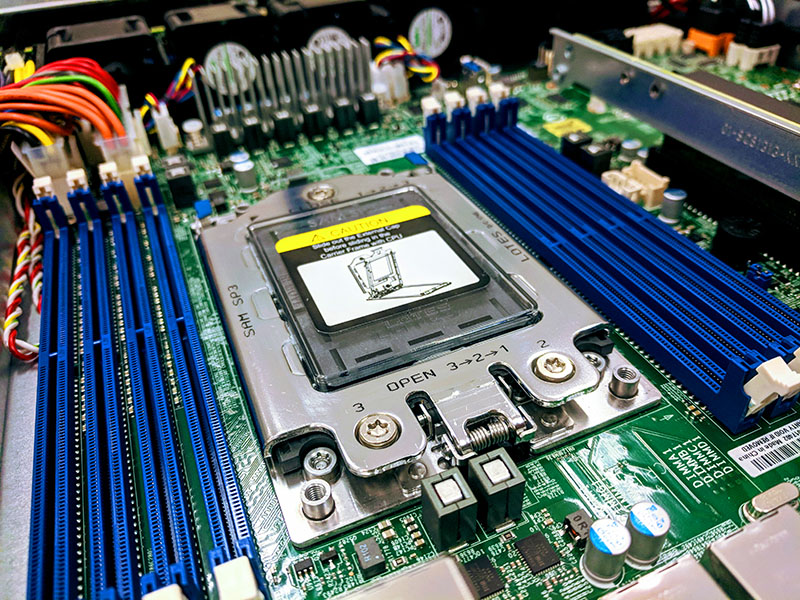
In terms of PCIe expansion, the primary options are a m.2 slot and a PCIe 3.0 x16 slot. The m.2 interface is intended for NMVe storage which is a key industry trend. While the motherboard itself has a massive number of PCIe lanes, the Supermicro AS-1013S-MTR has a single riser leading to the rear I/O. Although PCIe connectivity is the hallmark of single socket AMD EPYC 7000 series, in the dedicated server market, most configurations use one, if any, PCIe expansion card.

Our system was configured with the 4x 3.5″ hot-swap bays connected to onboard SATA. If you wanted to utilize the dual gold SATA DOM headers for boot devices, the motherboard has additional SATA III headers available.
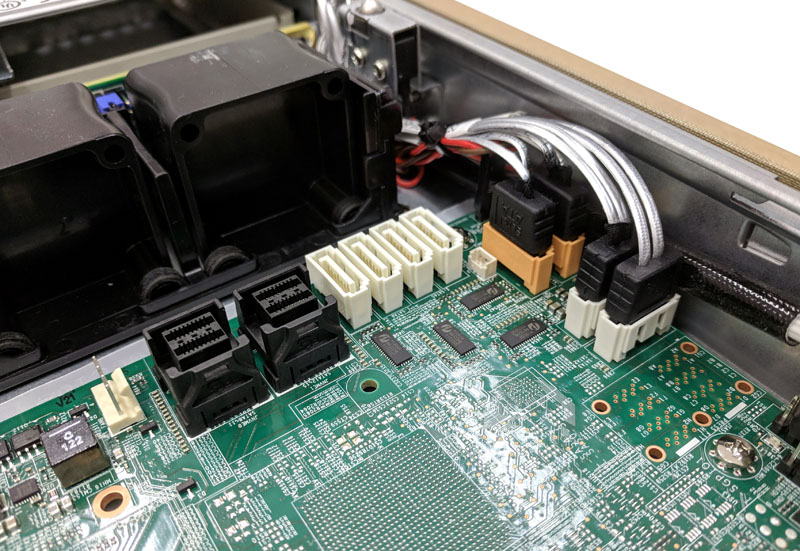
There is a USB 3.0 Type-A internal header but like many of the newer Supermicro platforms we have seen, the Supermicro AS-1013S-MTR has an internal SD card slot.
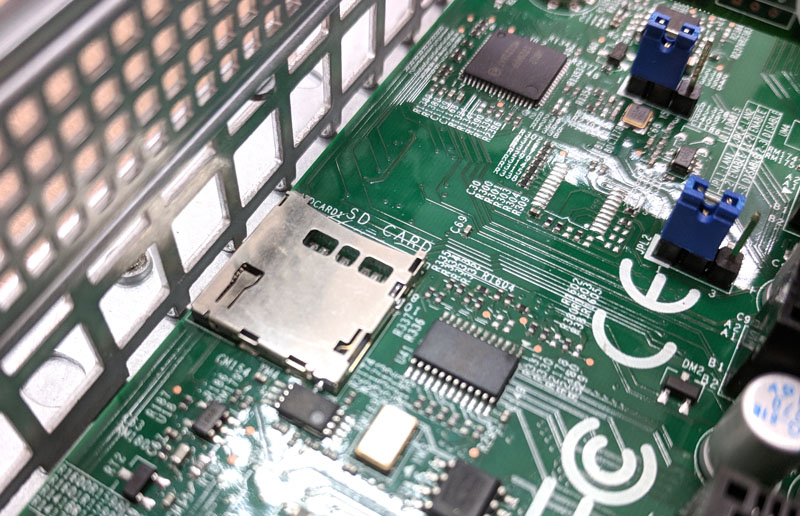
In terms of rear I/O, this is what we see many web hosts use. There are legacy serial VGA and USB 2.0/ 3.0 ports on the rear panel for physical access.

The three network ports include an out of band IPMI management port. The dual LAN ports are Intel i210 based which means that they have excellent OS support. If you are a dedicated hosting provider, having NICs that will work on virtually any OS that a customer may install is important to reduce service tickets. Many enterprise servers are migrating to 10GbE or 25GbE as a base, but the needs of the dedicated hosting market still tend towards 1GbE connectivity.
A key driver of cost savings in modern servers is the ability to remotely manage servers in the field. This saves on personnel costs and direct in-data center labor which can run well over $100/ hour. Today, most servers support some type of remote management and the remote management solutions have become a competitive vector for solutions providers.



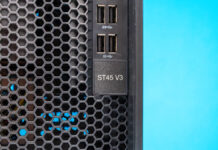
The model seems much too simplistic, given the number of PCIe channels available from the “P” series EPYC CPUs, I would have expected 10Gbe LAN connections to be standard. As well as options/models with 2×2.5″ NMVe + 8×2.5″ SATA/SAS as well as 10×2.5″ NMVe drive bays to be available for single CPUs (Instead of Supermicro only making those options/variations available as dual CPU systems).
BinkyTO I get where the review is coming from though. This is like $3600 USD for the barebones, a 24 core chip and 128gb of ram. Add another $1000 for drives and for $4600 USD you’ve got a system we can lease for $750 day in and day out. Even with hosting costs you’d get payback in a few quarters. I don’t think it’s great if you aren’t selling dedicates but for us this is what we’ve been waiting for.
@BinkyTo
The motherboard makers must have good reasons to make all the cool-boards for an other brand of CPU.
It’s not just Supermicro, it’s all of them. 128 PCIe-lanes and nobody is using its real potential, makes you wonder…
@BinkyTo @Misha Engel:
Here pushing single AMD EPYC to the limit.
https://www.tyan.com/Barebones_GA88B8021_B8021G88V2HR-2T-N
@Jay C,
Supermicro already has 1U model with the storage setups I am looking for, but they require dual EPYC CPUs — when a single EPYC has the same number of PCIe lanes as a dual CPU setup. So there is no reason to require dual CPUs.
@Misha,
These are the same mobo manufacturers that create 31 mobo’s when the Intel Skylake CPUs or when Intel released were released. Never mind the number of mobos required to support the latest “CxxxxxxFxxk” of Bronze, Silver, Gold and Platinum Intel XEON CPUs… especially, when they have a 1U chassis which supports dual EPIC CPUs already listed/available.
From the comments in the review it is not easy to understand if the 16 sata3 ports in the motherboard are functional or Supermicro included a special version of the motherboard with reduced specs. Any of you can help me with that doubt? I’m looking to buy one of these and it will be my first supermicro system.
Thanks